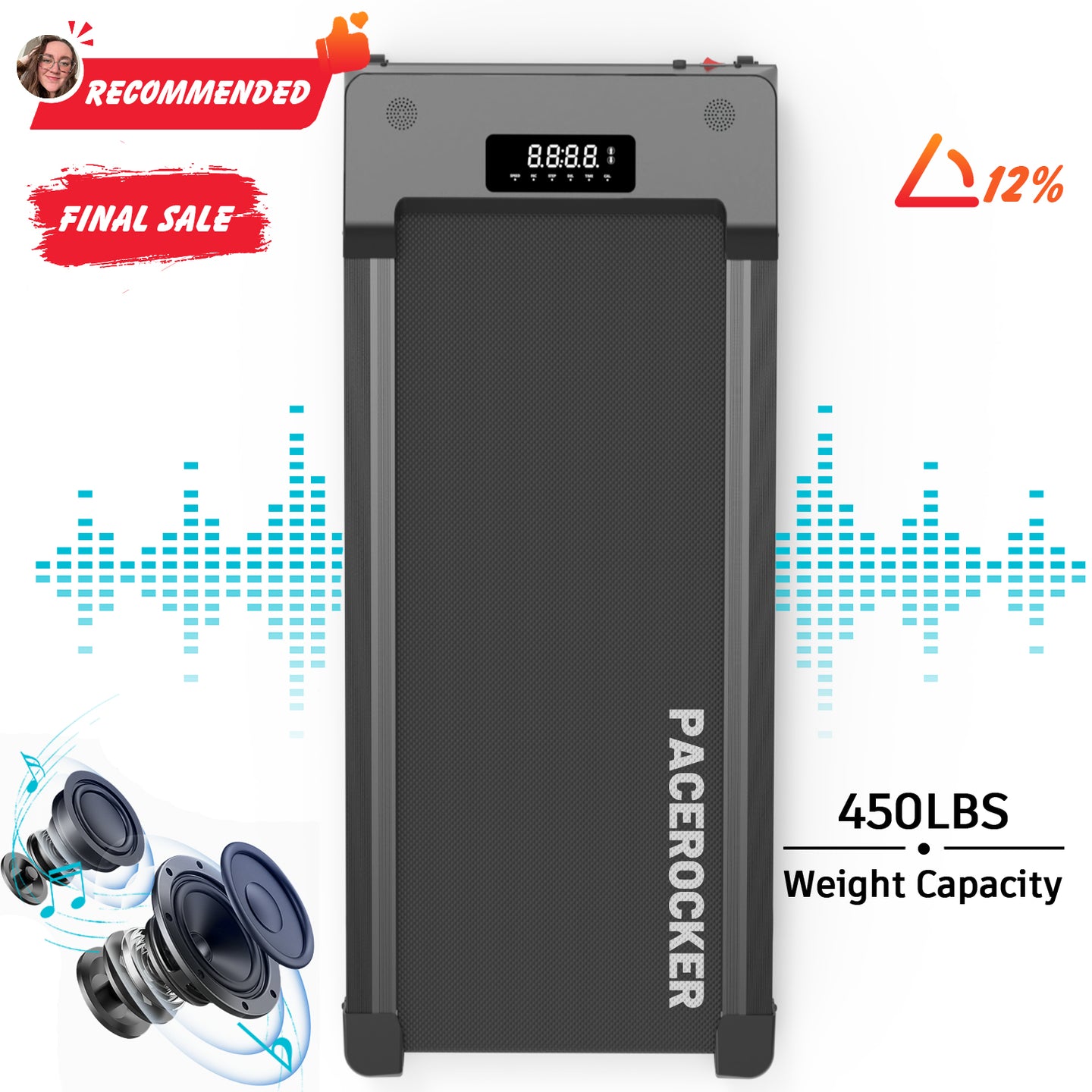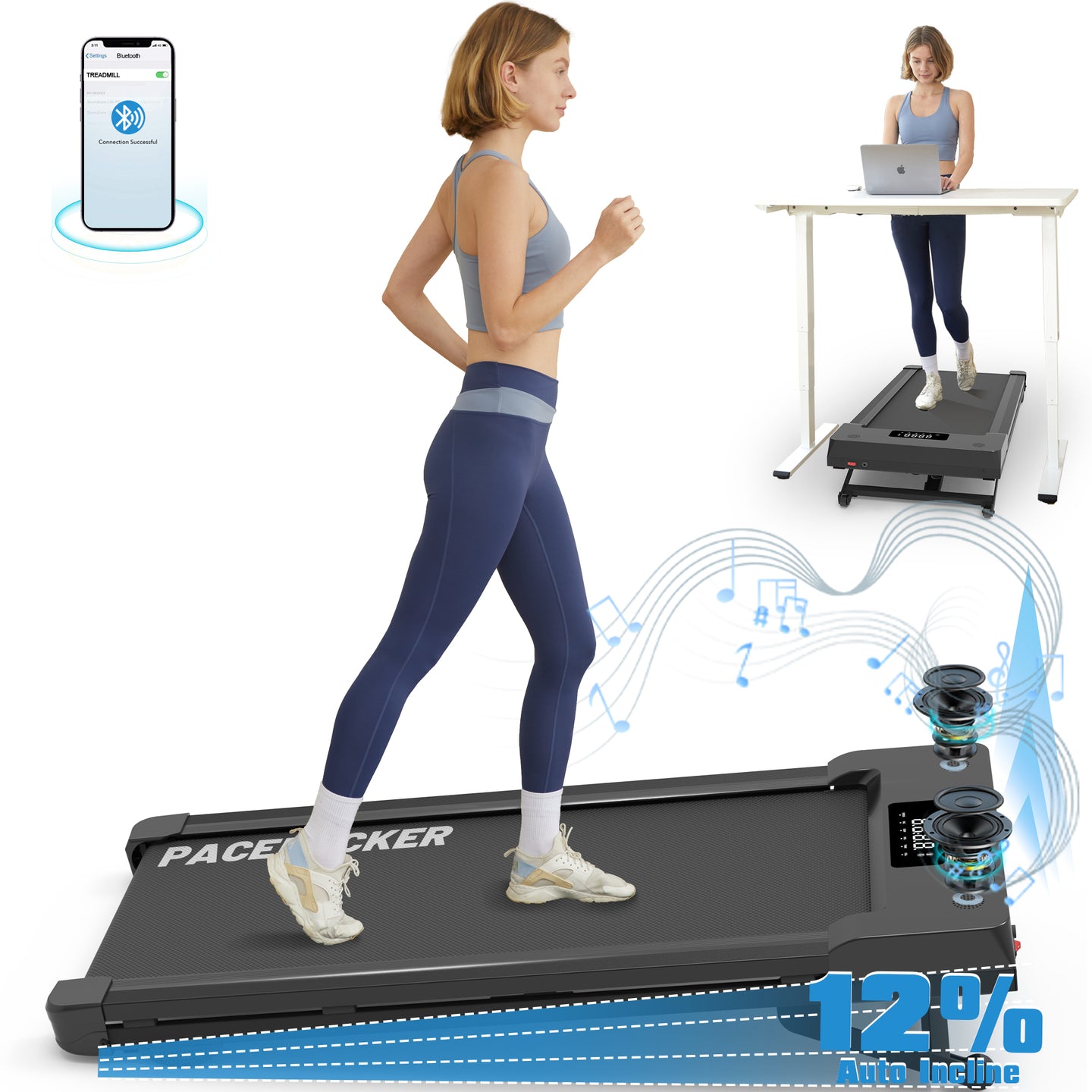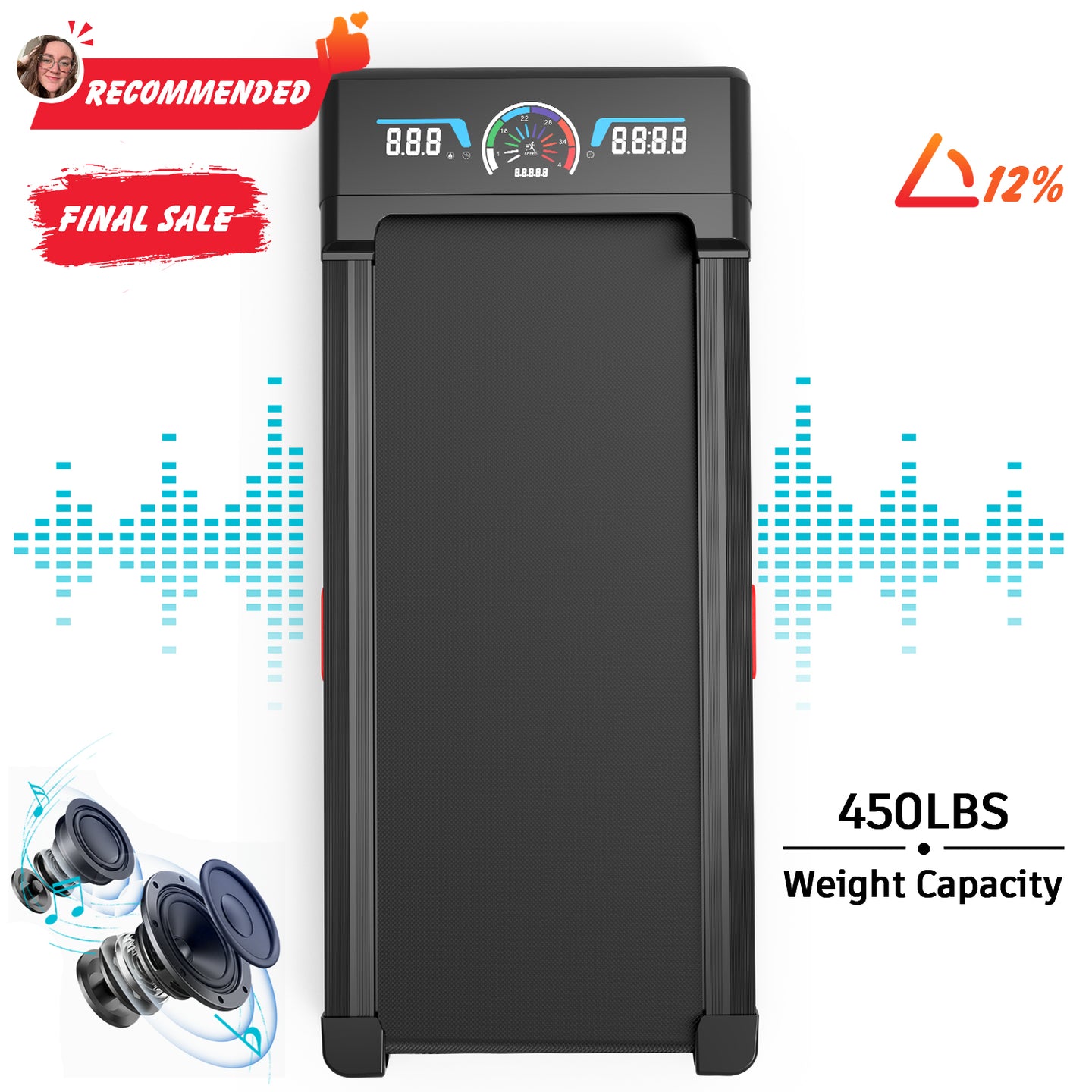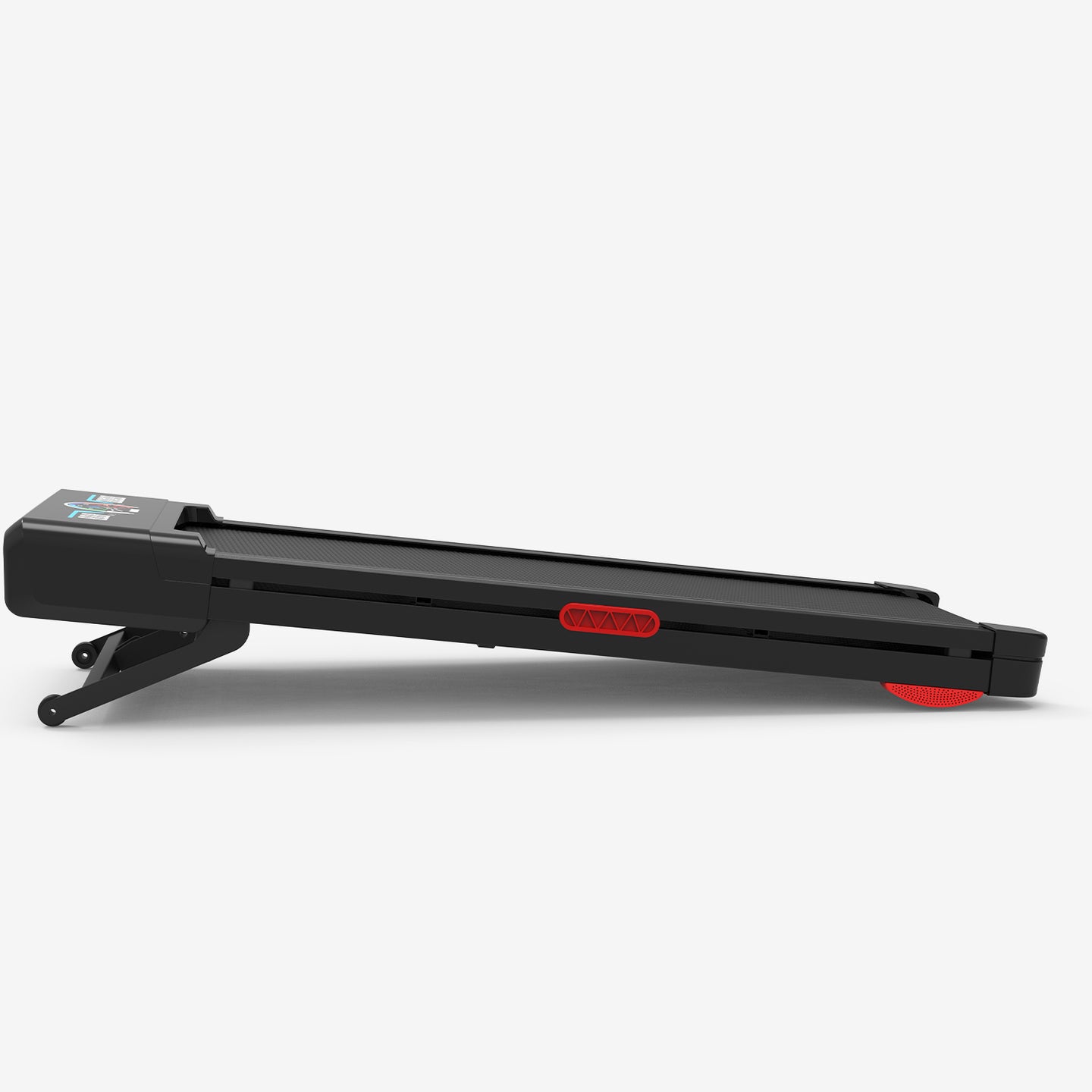Stationary Bike vs Walking Pad Treadmill
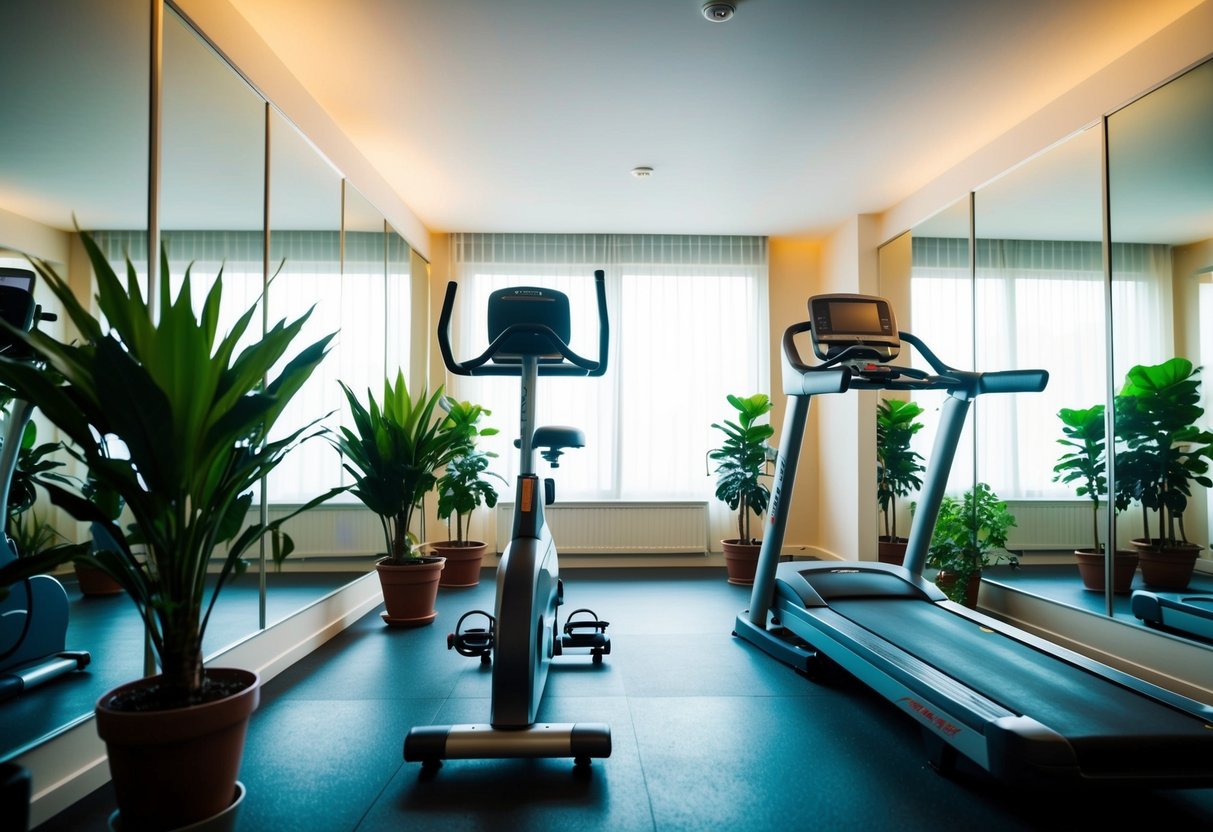
Don’t forget to check out our Pacerocker, Trailviber, and Trailviber Auto Incline walking pad treadmills.
Choosing between a stationary bike and a walking pad treadmill can be tricky. Both are excellent for physical activity and improving cardiovascular health. For those who prefer intense workouts, the stationary bike offers a more vigorous exercise option.
When we look at the walking pad treadmill, it’s perfect for lower-impact exercise like walking, which can be integrated into a daily routine easily. For those easing into regular exercise, it promotes steady and consistent movement without stressing joints.
Our fitness goals and personal preferences play a big role in the decision. Do we prioritize low-impact exercise or higher-intensity workouts? Both options have their benefits, so it’s crucial to consider our own optimal health path.
Key Takeaways
- Stationary bikes offer more intense workouts.
- Walking pads are great for gentle, regular exercise.
- Choose based on personal fitness goals and preferences.
Understanding Stationary Bikes
Stationary bikes offer a dynamic way to enhance cardiovascular fitness. They are excellent for burning calories, building endurance, and engaging various muscles efficiently.
Health Benefits of Stationary Bikes
Using a stationary bike is a great way to boost cardiovascular fitness. We can enjoy a low-impact workout that minimizes stress on joints. This makes it ideal for anyone worried about joint health. These bikes can help improve blood circulation, which is beneficial for heart health.
Muscle engagement is another perk. As our legs pedal, they engage muscles like the quadriceps and hamstrings. Calorie burn can be significant, aiding in weight management. Consistent use contributes to better endurance levels.
Types of Stationary Bikes and Features
Stationary bikes come in several types, each with unique features. The upright bike is similar to a regular bicycle, engaging our core and leg muscles. The recumbent bike offers a reclined seating position, supporting our back well, which is perfect for folks with posture issues.
Spin bikes, popular in fitness classes, feature adjustable resistance. This allows us to simulate hill climbing, providing a varied workout. They are a staple in many people's fitness journey. We can also find models with digital displays, showing metrics like calories burned and distance. This fitness equipment includes additional features like heart rate monitors, enhancing our exercise experience.
Exploring Walking Pad Treadmills
Walking pads are a compact and convenient way to stay active at home or work. They offer a gentle, low-impact exercise that's easy on the joints and perfect for a brisk walk. These machines fit well into tight spaces and busy schedules, providing a practical option for those with joint issues or seeking a versatile workout.
Advantages of Walking Pads
Walking pad treadmills are known for their space-saving design. They can easily fit under a bed or couch when not in use, making them ideal for small apartments or offices. Portability is another key benefit. We can move them around with ease, allowing us to exercise in different locations.
These walking pads are designed to offer a low impact exercise, which helps in reducing stress on joints. This makes them suitable for people with joint pain or those who prefer a gentle workout. Moreover, because walking is a natural movement, it’s more comfortable for most of us and can easily become a regular part of our exercise routine.
Working Out with a Walking Pad
Integrating a walking pad into our daily routine is simple and effective. We can use them while working at a standing desk, making it easier to squeeze in a workout without disrupting our day. Even a brisk walk can provide significant health benefits, such as improving cardiovascular health and aiding in weight management.
With walking pads, we have versatility in how we exercise. We can adjust the speed for a more intense workout or keep it slow for a relaxed walk. This flexibility helps cater to different fitness levels and preferences. Whether it's a casual stroll or a more dedicated exercise session, a walking pad can fit seamlessly into our lifestyle.
Comparative Analysis
When comparing stationary bikes and walking pad treadmills, we should focus on their workout intensity and how they fit into our daily routines. Both options have unique benefits and cater to different fitness goals and lifestyles.
Intensity and Workout Effectiveness
Stationary bikes offer adjustable resistance levels, making them perfect for both beginners and those aiming for higher intensity workouts. They help build muscle, especially in the lower body, and boost aerobic capacity. This option is effective for those seeking a calorie deficit and targeted weight loss.
Walking pad treadmills provide a low-impact workout that is gentle on our joints. They are ideal for consistent steady-state aerobic exercise. Though lower in intensity compared to bikes, walking pads are excellent for those who want to incorporate more movement in their day without additional strain. Each method contributes to building aerobic capacity, and our personal fitness goals can guide which is more effective for us.
Convenience and Adaptability
When it comes to convenience, both machines have advantages. Stationary bikes can be a great addition to our home gym. Once set up, they require minimal maintenance. They are durable and can handle frequent use. Walking pad treadmills are compact and easy to tuck away, which makes them ideal for smaller spaces or for those who want to stay active while working at a desk.
Walking pads are also lightweight and easy to move, enhancing accessibility. With a walking pad, we don’t need to dedicate an entire room to exercise equipment. These devices are suited for those who value portability and versatility, allowing us to stay active in various settings.
Choosing the Right Equipment
When it comes to picking between a stationary bike and a walking pad treadmill, our choice often depends on our personal goals and any physical limitations we might have. Let's look at which one suits different fitness needs best.
For Weight Loss and Calorie Burn
If our aim is to shed pounds and burn calories, both options have unique benefits. A stationary bike allows for high-intensity workouts, which can be great for creating a calorie deficit. By adjusting resistance levels, we can tackle both intense sprints and steady rides.
The walking pad treadmill, while lower in intensity, encourages longer durations. This can be beneficial when combined with other workout programs. Walking is easier on the joints, making it great for long sessions without much strain. Tracking our pace and distance on a walking pad can help us maintain consistency in burning calories.
For Rehabilitation and Low-Impact Workouts
For those of us concerned with rehabilitation or low-impact exercise, both tools provide gentle support. A stationary bike offers a seated workout that minimizes stress on the knees and ankles. It’s ideal for those dealing with joint issues or who are recovering from an injury.
The walking pad treadmill is a beginner-friendly option that supports slow, controlled movement. With a focus on walking, it preserves joint health and builds stamina gradually. Its flexibility in speed settings helps tailor workouts to personal recovery goals, ensuring safety as we build back strength.
Integrating into a Balanced Fitness Routine
Blending stationary bikes and walking pad treadmills can revamp our fitness journey. Both tools offer different benefits for heart health and muscle engagement. Balancing these activities ensures we cover cardio workouts and weight-bearing exercises effectively.
Incorporating Cardio and Strength Training
To mix cardio and strength training, we can use both the stationary bike and the walking pad. Stationary cycling boosts heart health through consistent cardio workouts. It allows us to engage muscles in our legs and core, and we can also include interval training to increase intensity.
On the other hand, the walking pad treadmill offers a weight-bearing exercise option. It helps improve muscle strength and endurance, especially if we add incline settings. To get the most out of these machines, let's schedule workouts on different days, or use one as a warm-up before the other for a balanced routine.
Creating a Personalized Exercise Plan
Building our personalized exercise plan means considering our fitness levels and preferences. We should start by defining clear goals, like increasing stamina or losing weight. We can then decide on daily or weekly schedules that mix both machines, focusing on variety to keep things interesting.
It's effective to track progress and adjust based on how our bodies respond. Experiment with session lengths and intensity levels to find what suits us best. Whether we favor the bike's low-impact ride or the treadmill's foot engagement, our plan should reflect our personal preferences and commitment to regular exercise.
Frequently Asked Questions
When it comes to choosing between a stationary bike and a walking pad treadmill, both have unique benefits. We'll explore how each can help with weight loss, impact belly fat, suit seniors, benefit knee health, and compare in terms of overall health benefits.
Can a stationary bike or walking on a treadmill help with weight loss more effectively?
Weight loss often depends on the intensity and duration of exercise. Stationary bikes can offer vigorous workouts with adjustable resistance. Walking pads can also be effective if we increase the speed and incline. It's about finding what fits best into our routine while keeping us motivated and consistent.
What's the impact of a treadmill vs a stationary bike on belly fat reduction?
Consistent cardio activity can help in reducing belly fat. Whether we choose a stationary bike or treadmill, the key lies in maintaining a regular exercise routine. Stationary bikes often allow for high-intensity interval training (HIIT), which some studies suggest may target belly fat effectively.
Which is more suitable for seniors, a treadmill or a stationary bike?
For seniors, a stationary bike may offer a safer option. It provides a low-impact workout that's easier on the joints. Walking pads can also be beneficial but may require more balance and coordination. It's essential to consult with healthcare providers to decide what's best for individual needs.
For knee health, should one opt for an exercise bike or a treadmill?
Those with knee concerns may find a stationary bike to be gentler. It reduces the risk of impact-related injuries. While treadmills can also provide low-impact exercise, they might put more strain on the knees when walking at higher speeds or inclines. Always listen to our bodies and adjust as needed.
How does 30 minutes of cycling compare to 30 minutes of walking in terms of health benefits?
Both cycling and walking are excellent for cardiovascular health. Cycling can burn more calories if done intensely but can also be tailored for low-intensity sessions like walking. Walking provides benefits for bone health and mental relaxation. Our preference might depend on personal enjoyment and goals.
Are treadmills or stationary bikes more effective for losing belly fat?
Both exercise bikes and treadmills can contribute to losing belly fat when used regularly with a healthy diet. Stationary bikes might be slightly more effective with HIIT workouts. Walking on treadmills with added intensity, like incline walking, can also boost fat loss.
Choose between a stationary bike for intense workouts and a walking pad treadmill for easy, everyday activity. Both improve cardiovascular health.



